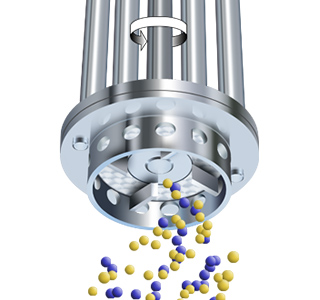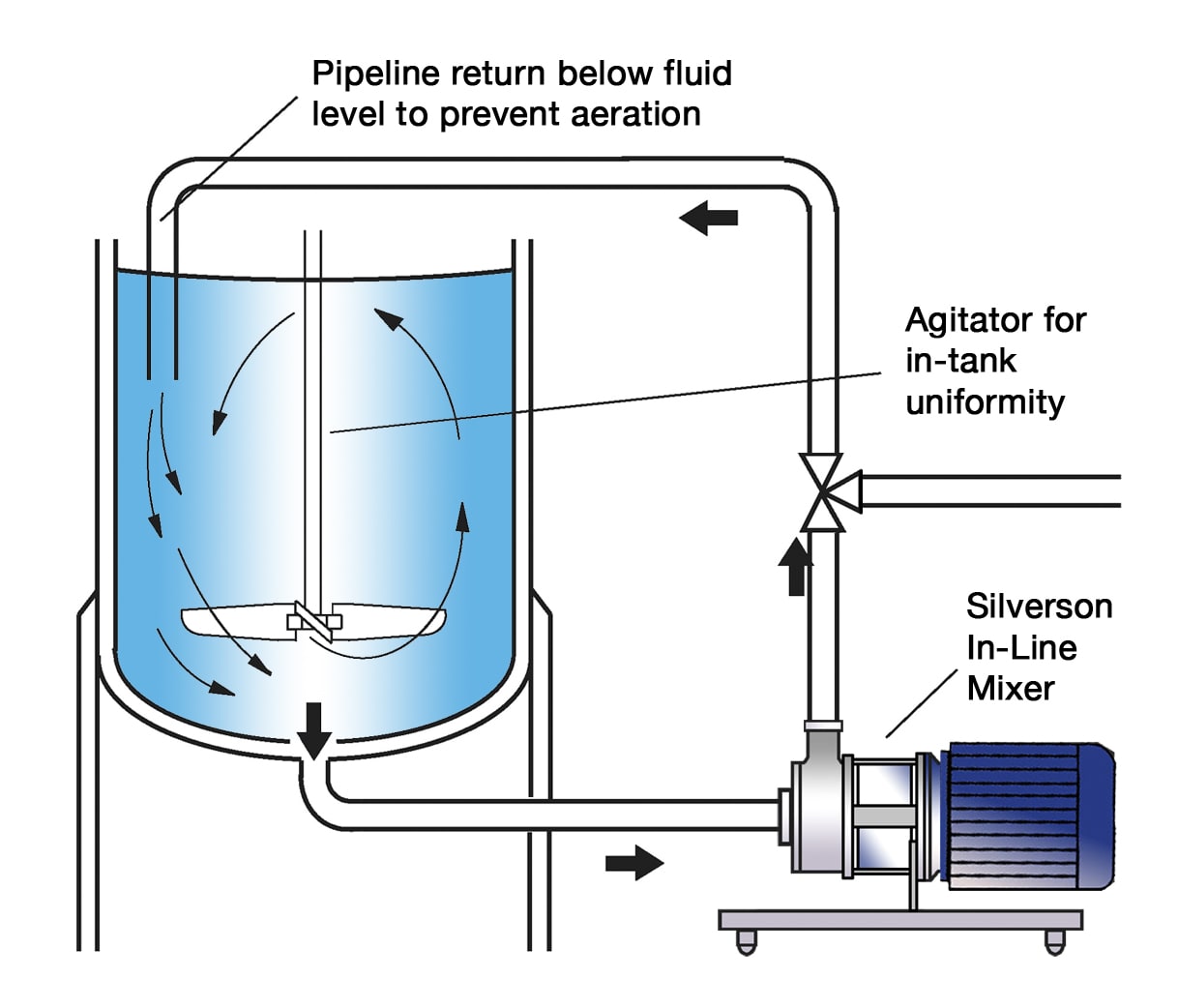Manufacture of Pharmaceutical Tablet Coatings
Pharmaceutical tablet coatings generally consist of a sugar or cellulose based binder, plasticiser, film forming agent and colourant. These ingredients are supplied in granulated or powder form for dispersion in aqueous or organic solvents at concentration varying from 10 - 20% depending on the desired coating properties and formula. In addition to enhancing the appearance and aiding identification of the product, tablet coatings perform a number of functions:
- To protect the tablet from moisture and other adverse conditions.
- To lubricate the tablet to ease swallowing.
- To disguise unpleasant tastes.
- To create a barrier between the active ingredient and the gastrointestinal tract.
- To control the release of drugs into the body.
The Process
A typical method of dispersion is as follows:
- The water/solvent is charged into the mixing vessel, with the mixer positioned off centre to create a vortex.
- The dry ingredients are added and drawn into the vortex.
- Mixing continues until the ingredients are fully dissolved.
- The finished coating is applied to the tablets by spraying in coating pans.
In order to achieve the above, a number of processing factors must be considered:
- The mixer must be capable of circulating the entire contents of the vessel to ensure uniformity.
- A wide range of colours are used in tablet coatings and batch sizes are generally small.
- Equipment must be easily cleaned and ideally adapted to be Cleaned-In-Place (CIP).
- The mixer must be capable of processing at ambient temperatures as some ingredients may be heat sensitive.
The Problem
Whilst many proprietary coatings are designed to be easily dispersed, a number of problems are frequently encountered when using conventional mixers and agitators:
- Conventional agitators cannot rapidly dissolve materials at ambient temperatures.
- Agitators are not capable of rapidly breaking down agglomerates.
- A low particle size is required in order to avoid clogging of the spraying apparatus.
- If the colourant is not properly dispersed, flecks of colour can occur in the tablets.
The Solution
A Silverson high shear mixer can overcome all of these manufacturing difficulties. The rotor/stator workhead is capable of dissolving sugar and dispersing cellulose type materials in a fraction of the time taken by conventional agitators, operating as follows:

Stage 1
The vessel is charged with the base liquid. The mixer is started and the coating granules and other ingredients are added. The high speed rotation of the rotor creates a powerful suction which draws the granulated or powdered coating material and liquid into the workhead. They are rapidly mixed and driven towards the periphery of the workhead by centrifugal force.

Stage 2
The granules are subjected to a milling action in the clearance between the ends of the rotor blades and the stator wall. Agglomerates are broken down and dispersed. The materials are then forced out through the stator into the body of the mix. Fresh liquid and powdered ingredients are drawn into the workhead.

Stage 3
This develops a circulatory pattern of mixing within the vessel which ensures that all material passes through the workhead many hundreds of times, quickly dissolving the granules into the liquid and progressively reducing the particle size. This is achieved without the need for raised temperatures.
-
Stage 1

Stage 1
The vessel is charged with the base liquid. The mixer is started and the coating granules and other ingredients are added. The high speed rotation of the rotor creates a powerful suction which draws the granulated or powdered coating material and liquid into the workhead. They are rapidly mixed and driven towards the periphery of the workhead by centrifugal force.
-
Stage 2

Stage 2
The granules are subjected to a milling action in the clearance between the ends of the rotor blades and the stator wall. Agglomerates are broken down and dispersed. The materials are then forced out through the stator into the body of the mix. Fresh liquid and powdered ingredients are drawn into the workhead.
-
Stage 3

Stage 3
This develops a circulatory pattern of mixing within the vessel which ensures that all material passes through the workhead many hundreds of times, quickly dissolving the granules into the liquid and progressively reducing the particle size. This is achieved without the need for raised temperatures.
The Advantages
- Consistent product quality and repeatability.
- Agglomerate-free mix.
- Rapid mixing time.
- Maximised yield of raw materials as thickening agents are fully hydrated and other ingredients fully dispersed.
The batch size, formulation, type of ingredients and the viscosity of the end product dictate which machine from the Silverson product range is best suited to individual process requirements:
High Shear Batch Mixers
- Suitable for batch sizes up to 1000 litres
- Can be used on mobile floor stands
- Sealed units available for pressure/vacuum operations
- Small units available for R&D and pilot production
High Shear In-Line Mixers
- Ideal for larger batches
- Aeration free
- Easily retrofitted to existing plant
- Self-pumping
- Can be used to discharge vessel
- Ultra Hygienic models available
High Shear Bottom Entry Mixers
- Suitable for use on high viscosity products in conjunction with an anchor stirrer/scraper
- Ultra Hygienic models available
Silverson Flashmix
- Ideal for larger batches
- Capable of rapidly incorporating large volumes of powders
- Minimised aeration
- Minimised cleaning requirements
- Suitable for higher viscosity mixes
- Suitable for operation at higher temperatures
- Minimum operator input required
Silverson Ultramix
- Excellent in-tank movement
- Capable of rapidly incorporating large volumes of powders
- Ultra Hygienic CIP design
- Ideal for higher viscosity mixes
- Low maintenance




